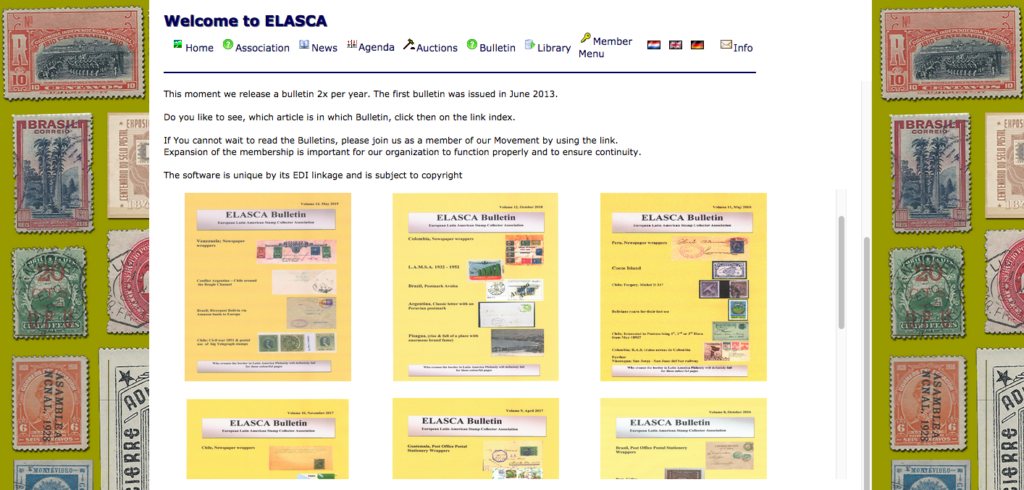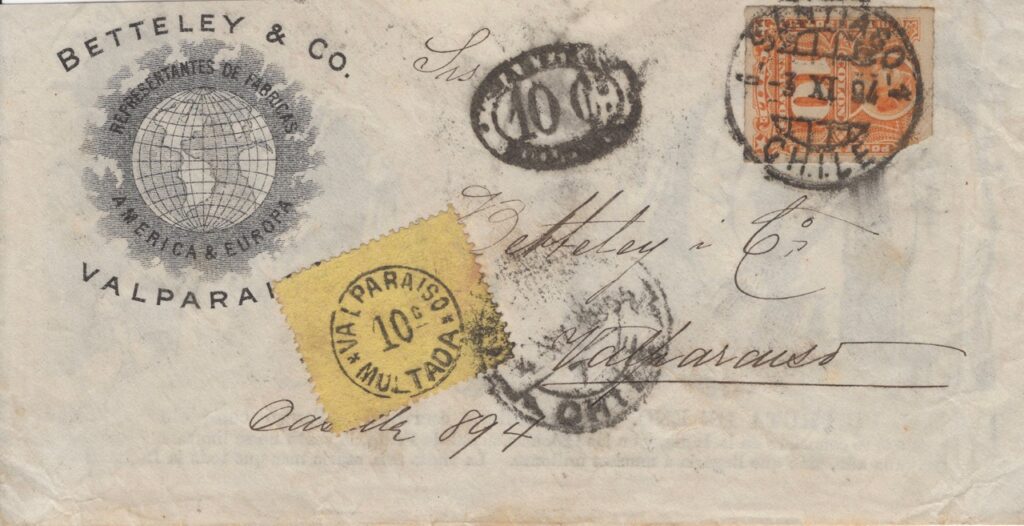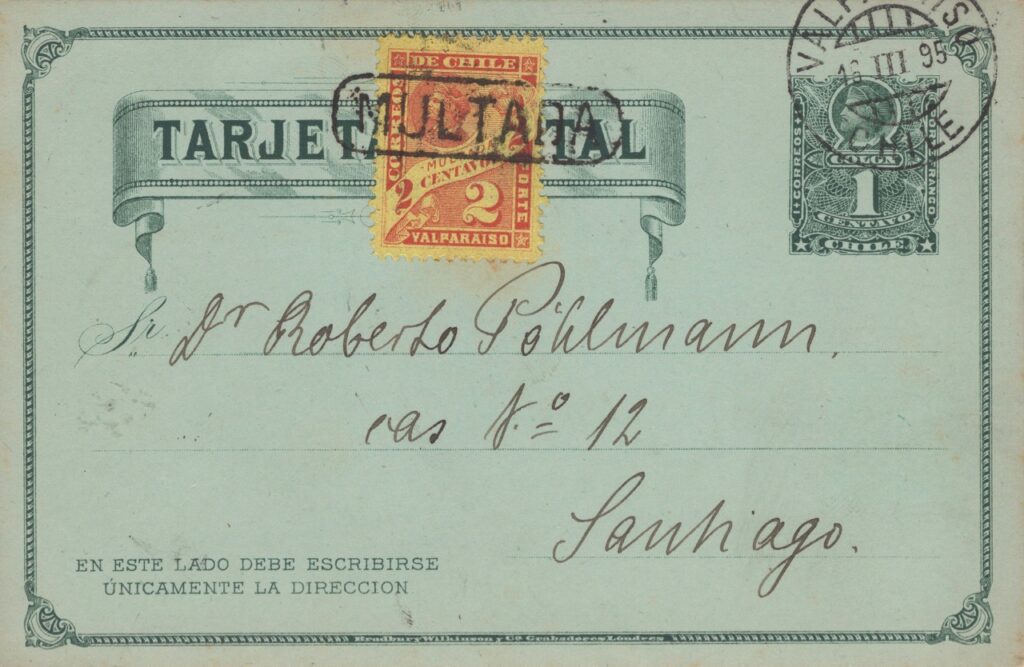
Most Latin American countries have their own specialized society but what if your tastes are broader and you want to encompass the region as a whole?
Regional societies and journals have thrived in the past, notably The Mainsheet from the UK-based Spanish Main Society.
In the US, the Latin America Philatelic Society was active from the late ’90’s through to 2007, before it ran out of steam. It published The Latin American Post four times a year.
And prior to that, The Pan American Philatelist published a journal active for a four year period between 1954 and 1957.
These organisations are now long gone but in a quiet corner of The Netherlands, The European Latin American Stamp Collector Association (ELASCA) continues to fly the flag for the regional approach.
Jan de Ruiter is the co-founder of the organisation. He has a particular interest in ‘multada’ (postage due) and ‘ambulancia’ (travelling post office) items from Chile and this article illustrates a few of them.
CLA What is the story behind ELASCA? How did the organization start?
JDR The story begins in 1987. I became a member of a Dutch specialized stamp association for Latin America which was founded in 1964. The association did not have a regular bulletin (only five issues up until 1999) but it did hold meetings four times a year.
The association was unknown to the general public and led a quiet life. In 2000 the board asked me to become editor. With the help of other board members I produced one thin bulletin per year, then from 2001 it became two bulletins per year which became increasingly thicker.
In 2003 I initiated the website and became involved in the auction. Those too were a success. Apart from the role of treasurer and chairman, I fulfilled all executive functions.
In 2006 I was invited to become chairman and the number of members gradually increased from 60 to 101. However, there was a power struggle and I decided not to stand for re-election in 2012 and left the association.
ELASCA was then founded in March 2013 by 17 members, many of them from the old association.

CLA Who are the people behind ELASCA?
JDR ELASCA was started by myself, Jan de Ruiter, with great help from my co founder Hugo van Tilburg from Belgium. Unfortunately Hugo passed away in 2015.
CLA What is the motivation for ELASCA? What does it hope to achieve?
JDR I like to write about philatelic topics and decided to start a blog after I said goodbye to the previous association. But a few philatelists from the old organisation challenged me to set up a new society in which I could work out all my ideas and offered me their support.
My goal was a new type of stamp association that embraced the changes in society by leveraging the internet. Meetings to exchange stamps are outdated in my view. Stamp associations are aging and numbers are falling because there is no longer an influx of new collectors. But that applies to almost all types of club, including political parties.

CLA Tell us about the membership. What are the benefits?
JDR ELASCA has two types of membership: internet only members and full members. Full members receive a hard copy bulletin in either English or Dutch. Internet members receive the web based bulletin in English.
Dealers are welcome as members because they have a common interest with the association. A typical ELASCA member is computer literate, speaks English and wants to share their philatelic knowledge with others.
ELASCA also offers services to philatelists who are not members of the association. These include access to the free library, the free release of the bulletin after five years and our auctions.
We hold two auctions per year with a maximum of 110 lots, usually containing postal history and better stamps such as errors, proofs and specimens. There is always a minimum of one lot per auction for each country.
The ELASCA Bulletin is issued twice a year. It contains twenty-five A4 pages as standard and includes in-depth topics (examples of older bulletins are available in the free library).
ELASCA holds two meetings per year in Barneveld, in The Netherlands, coinciding with a well-attended stamp fair. We also organise meetings during major international stamp fairs.
CLA What challenges does ELASCA face? What do you think the future looks like?
JDR The viability of stamp societies is the biggest challenge. It is an extra challenge for ELASCA, because it is a young association without “legacy” members.
To counter this, we have developed contacts with fellow associations, e.g. the current Presidents of ELASCA and Arge Brasilien have been working closely together since 2005. In 2015 they had a joint stand during Europhilex in London and at Sindelfingen (Germany), the most important exhibition in Europe, both associations always share a stand.

CLA Can you tell us something about your own interests? How did you become a collector?
JDR I have a Burgundian lifestyle (for those not familiar with the phrase, Google tells me that this translates to enjoyment of life, good food and an extravagant lifestyle, Ed. (!) ).
Travelling is my passion. My first major trip was in 1969 by train to Istanbul at the age of 17. That was quite an undertaking then. After that many trips followed to Turkey and other countries. From 1976 I traveled to Central and South America every other year, initially with my wife but later with the children also.
My son was fourteen months old when we traveled to Brazil for six weeks and my daughter ten months old when we first visited Cuba. In 2014 we traveled through Chile and Argentina (but not to places where it is cold!).
My grandmother gave me my first stamps at the age of four: stamps from the USA. Later, Dutch stamps were added and at the age of ten I expanded into Egypt and the stamps of Dutch and British colonies.
From the age of twenty-five I could call myself a philatelist. I collected the Netherlands with colonies plus Egypt and Brazil quite fanatically. The Netherlands and colonies later lapsed, when I discovered that I had bought counterfeit stamps and I stopped collecting Egypt because dealers could no longer deliver the new stamps.
But Chile and Cuba replaced them. Chile is currently my main collecting area. The travelling post offices (‘ambulancias’) are my passion.
Find out more about ELASCA at www.elasca.eu

Leave a Reply